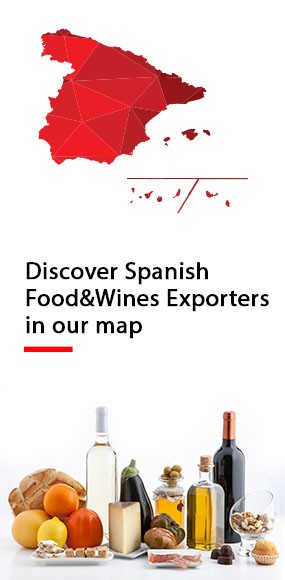.png.transform/rendition-xs/image_image%20(1).png)
Our Daily Bread: 6 Spanish Breads with PGI status You Need To Try
We tour Spain through its most traditional breads, a pillar of nutrition but also essential in many recipes
“Bread is older than writing,” said author Predrag Matvejević in a beautiful essay on the history of bread. Its symbolic power and ability to nourish not only the body, but also the life of local traditions, is well known. Bread can always be found on Spain dinner tables and is a part of every moment of the day: from toast, sweet or savory, that brightens up breakfasts, to the sandwiches enjoyed in the afternoon. A loaf of bread or a baguette is essentials at mealtime, as are mini sandwiches at midday and a wide range of picos (breadsticks) served alongside appetizers.
Bread is not only enjoyed on the side, but it also plays a fundamental role in traditional recipes. It's essential for dipping and soaking up and being spread with sauces, but its prominence is especially evident in dishes like migas, in soups as a thickener, as a filling for meatballs, and as a base for torrijas.
Itt also plays an important role in the culture of tapas and pintxos. Bread plays an essential role in the creation of Basque pintxos, holding together recipes based on anchovy, cod or Piquillo peppers. It is also essential in pa amb tomàquet, a tapa or appetizer closely linked to Catalan culture but consumed throughout the country.
In recognition of this heritage, six varieties of bread in Spain have Protected Geographical Indication (PGI) status, which guarantees their quality, authenticity, and ties to their places of origin. This recognition not only protects traditional production techniques, but also highlights the importance of bread in the local culture and economy, safeguarding a baking legacy that deserves to be celebrated and preserved.
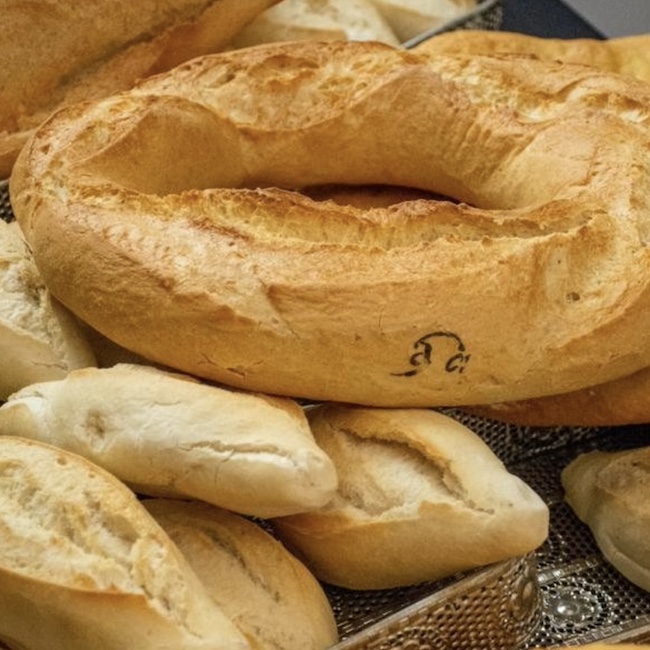
Pan de Alfacar PGI, artisan bread from Granada
The Andalusian Pan de Alfacar PGI, with its centuries-old tradition, is more than just a simple side during mealtimes. The recipe is based on three unique elements from the region: water from the springs of the Sierra de la Alfaguara, wood from the Mediterranean forests used for baking, and Moorish ovens, with Arabic roots and a semicircular shape, which transmit heat by conduction.
Although, at present, there are very few bakeries with the PGI seal, bread production until well into the 19th century was an important economic driver for Alfacar and Víznar, the main bakery suppliers in Granada since the 16th century, as detailed in the book Apeo y Repartimiento de Alfacar.
Since then, Alfacar's bread has been made with soft flour from Moorish or Durum wheat, manual rolling the dough into balls, and the use of tendíos, where the dough rests covered with dishtowels that help to increase the humidity.
The result is a bread with a golden, crunchy crust and a flexible crumb, and is consumed daily in different formats, including as rolls, doughnuts, and loaves. It's best accompanied by a plate of fried mushrooms, an alimoje (a sauce made from peppers, garlic and bread) with cod, or the traditional dish of choto (kid goat) with garlic.
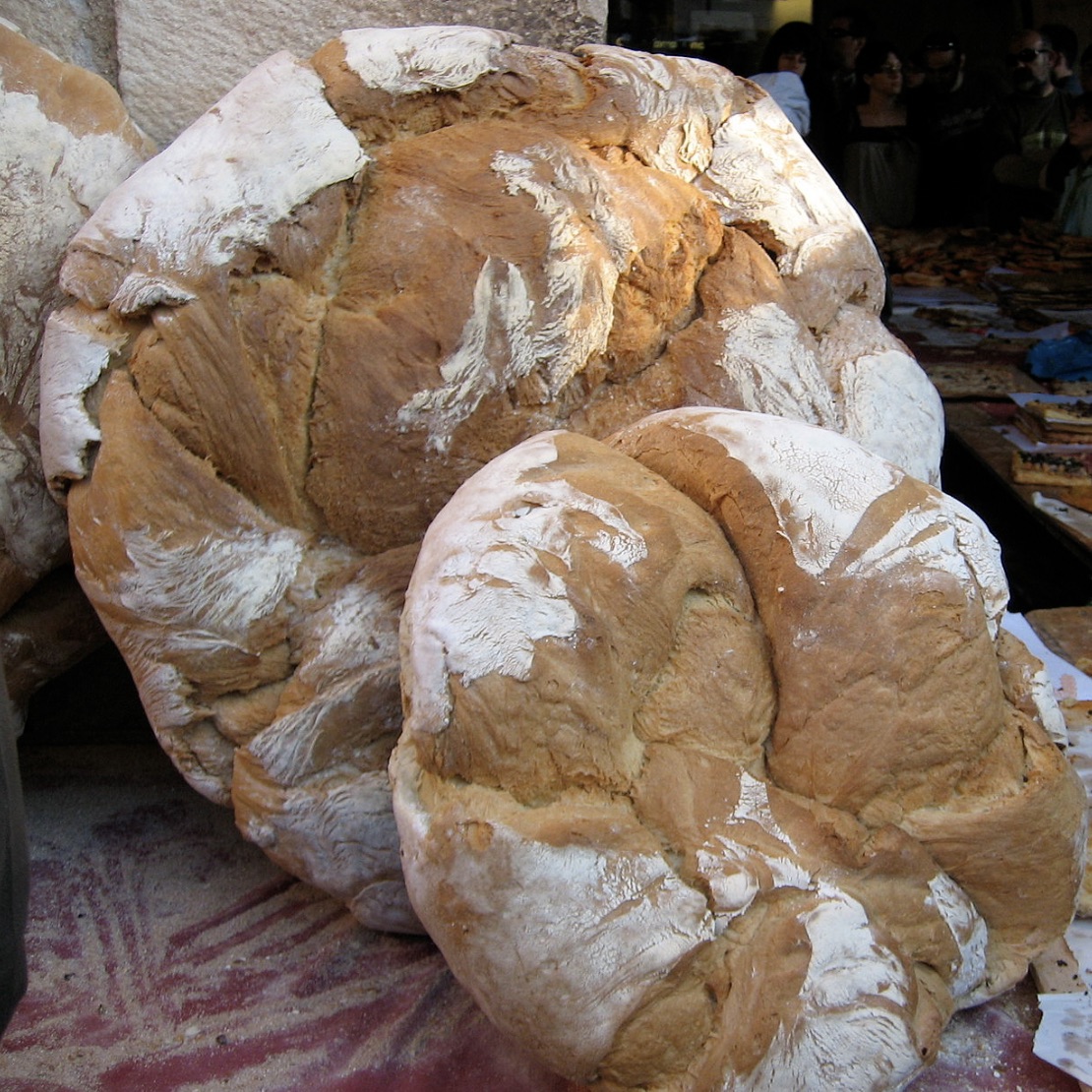
Pa de Pagès Català PGI: from farm to table
As its name suggests, Pa de Pagès Català PGI (meaning peasant) is deeply connected to the rural world and peasant life in Catalonia. In the Middle Ages, bakers were often also in charge of milling the flour, and the peasants came to them with the wheat they had gathered in the fields.
As a result, it came to be part of their daily diet, satiating them and providing them with energy for the long working days. The know-how behind this bread has been passed down from generation to generation, maintaining the recipe until a tasty, attractive bread was obtained.
Weighing about 2 kg, pa de pagès is made with medium and strong flour, using a active starter from the night before. It requires a slow fermentation and is finished in hearth ovens, passed down from parents to children. The bread is crunchy, with a toasted crust and a whitish, honeycombed crumb. It's usually cut into slices and served with any type of food, including morning toast, both sweet and savory, although it's irresistible when used to make pa amb tomàquet.
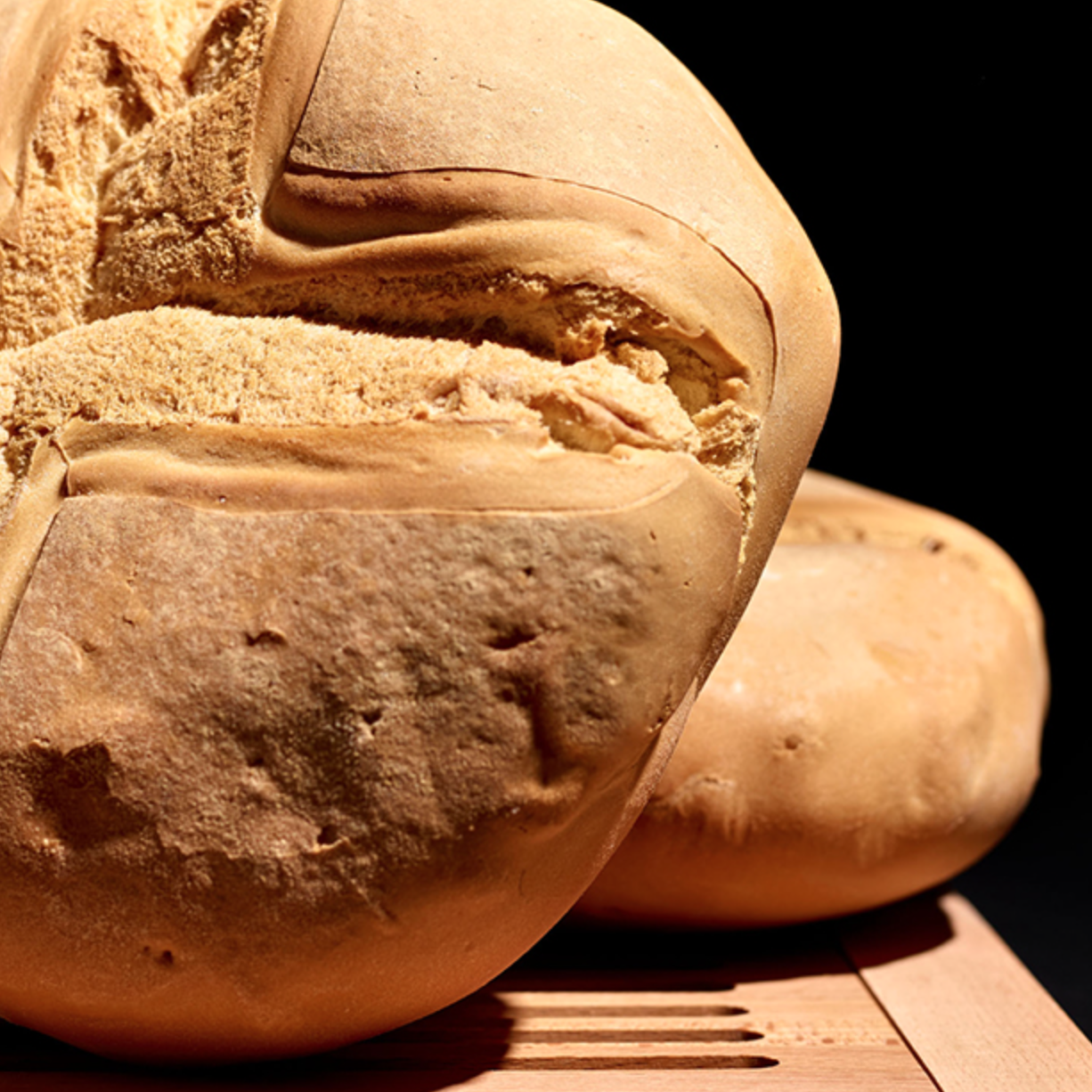
Pan de Cruz de Ciudad Real PGI, gastronomic roots
From migas and Camacho's stew to gachas, Pan de Cruz de Ciudad Real PGI bread has deep ties to the traditional recipes of Castile-La Mancha and part of Murcia. With mentions dating back to the 13th century, this bread has been part of the daily life of shepherds and peasants in the regions of Calatrava, Almagro, and Manzanares, who needed a food that could withstand long days in the fields and was easy to transport.
Although the formats vary, such as the loaf and the libreta (a loaf weighing almost half a kilo), the most common size is the roll, which fits in the palm of the hand and, of course, bears the mark of a cross on its crust. For dipping, the secret to this bread is the bread wheat, which yields not only a thick crust, but also a compact crumb with a slight sweet flavor of toasted cereal. It can easily keep for a week in perfect condition and be served with stews as cocido madrileño (madrilenian stew) or lentils with chorizo or a selection of delicious Manchego cheeses.
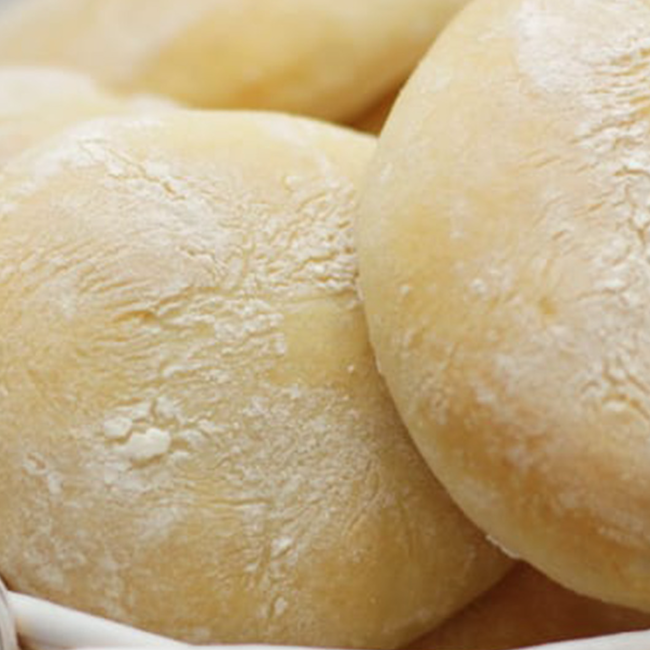
Local and popular: Mollete de Antequera PGI, a great morning bread
This roll is probably one of the most popular breads in Spain. The Mollete de Antequera PGI (Málaga) has become a symbol of breakfast and the midday snack: with pringá (made from pork or sausages), ham, with squid, with veal, with a slice of tortilla, or with a coffee. The range of possibilities for mollete is almost infinite and it is one of the most common breads in Spanish cafes.
Its sponginess—mollete comes from the Spanish word for “spring”—and its smooth crust, typical of the Arab tradition of flatbreads, have made it a versatile food from the beginning. The resurgence of this bread is due to the baker Juan Paradas Pérez who, in the early 1940s, promoted its consumption for breakfast.
Made with soft flour, the mollete has a whitish, thin and elastic crust, with marked holes in a yellowish crumb. Its flavor tends to be acidic, with hints of yeast and cereal, and it can be stored for up to 5 days.
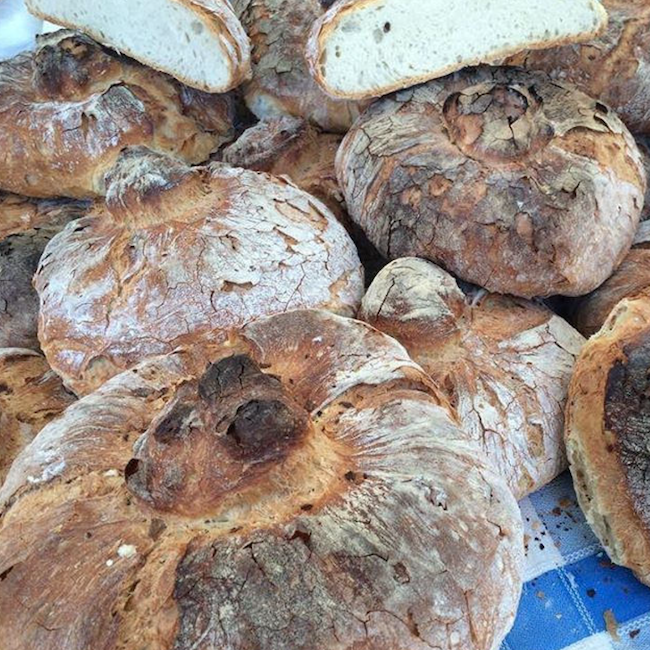
Pan Gallego PGI: regional pride
Galicia is synonymous with seafood, empanada, and Albariño... and, of course, of bread. So much so, that the term “Galician bread” has spread throughout Spain to generically refer to any artisan bread made in the region.
The roots of Galician bread date back to the presence of Celtic settlements, whose techniques were perfected, especially by Catholic monks, with the subsequent expansion of Christianity in the Peninsula.
Pan Gallego PGI has a golden, rough, and floured crust, as well as a voluptuous and honeycombed crumb. Following tradition, it's made with soft wheat flour from the region and involves a long fermentation process. Available in various formats, whether as a loaf, a doughnut, or a roll, it's baked in stone hearth ovens, which ensures it remains fresh for several days. It's consumed daily and is an excellent side with almost any meal, but the combination with extra virgin olive oil, cold cuts, and cheeses makes it a real delicacy.
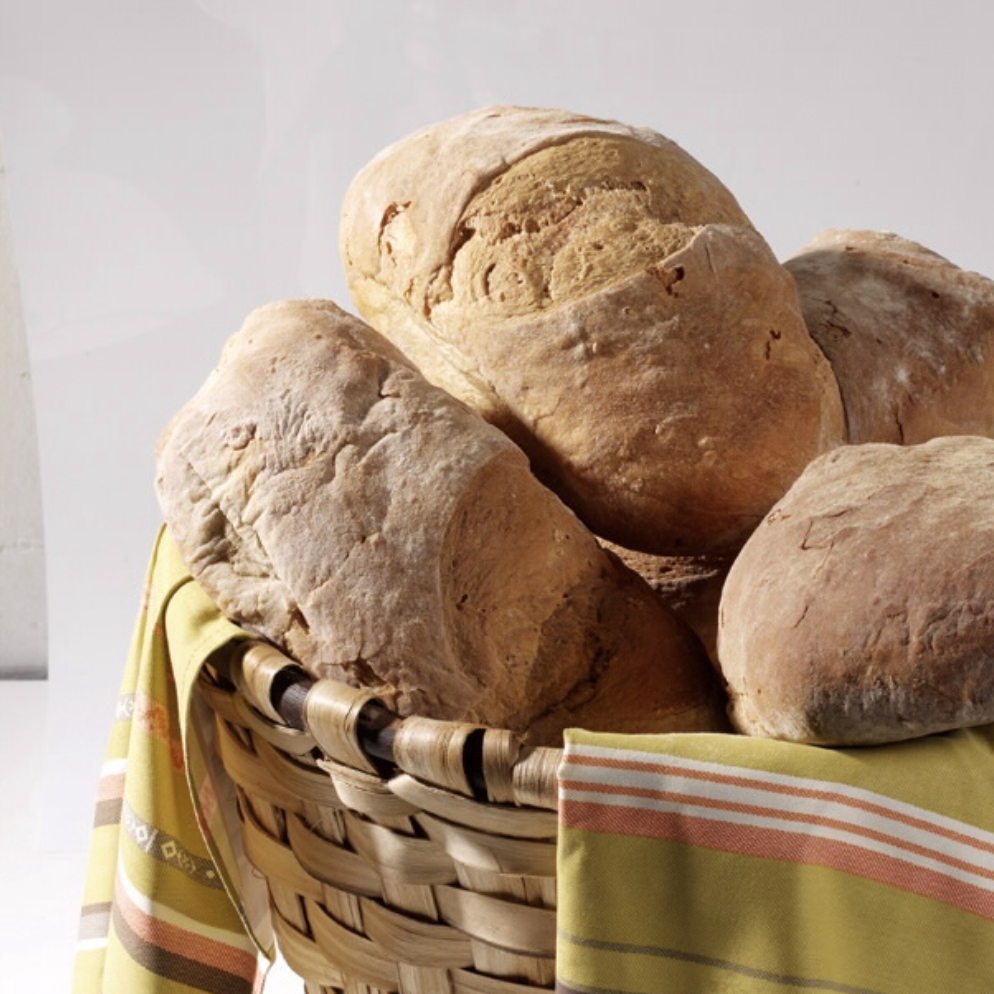
Pan de Cea PGI, a symbol of tradition
Continuing with Galicia's baking tradition, Pan de Cea PGI is another fantastic example of how tradition and history come together to produce a unique product. Since the 13th century, the Galicia village of San Cristóbal de Cea has proudly borne the title of “The town of good bread,” bestowed by King Sancho IV. The historical vicissitudes of the place have not diminished the craftsmanship of this bread which, since the beginning, has been made mainly by the women panadeiriñas de Cea, in charge of kneading and baking in circular granite ovens.
Undoubtedly, the fenda, a longitudinal mark that divides the bread, distinguishes the Pan de Cea, but the baking process is also special because while it's being baked, the dough is cut again and lifted from below with a bread shovel, a process known as andar no pan.
Both the poia and the molete, the two types of Cea bread, have a hard brown crust, which is ideal for slicing. The crumb, which is very spongy and slightly honeycombed, has an intense wheat flavor that pairs well with all kinds of dishes, such as Galician pulpo and lacón de con grelos (pork shoulder with turnip greens).
Each of these breads, with their texture, aroma, and tradition, are a reflection of Spain's gastronomic diversity and, to a large extent, represent an often forgotten cultural connection. From the farm to the table, bread not only nourishes, it's also a reflection of the past and deserves to be protected.

